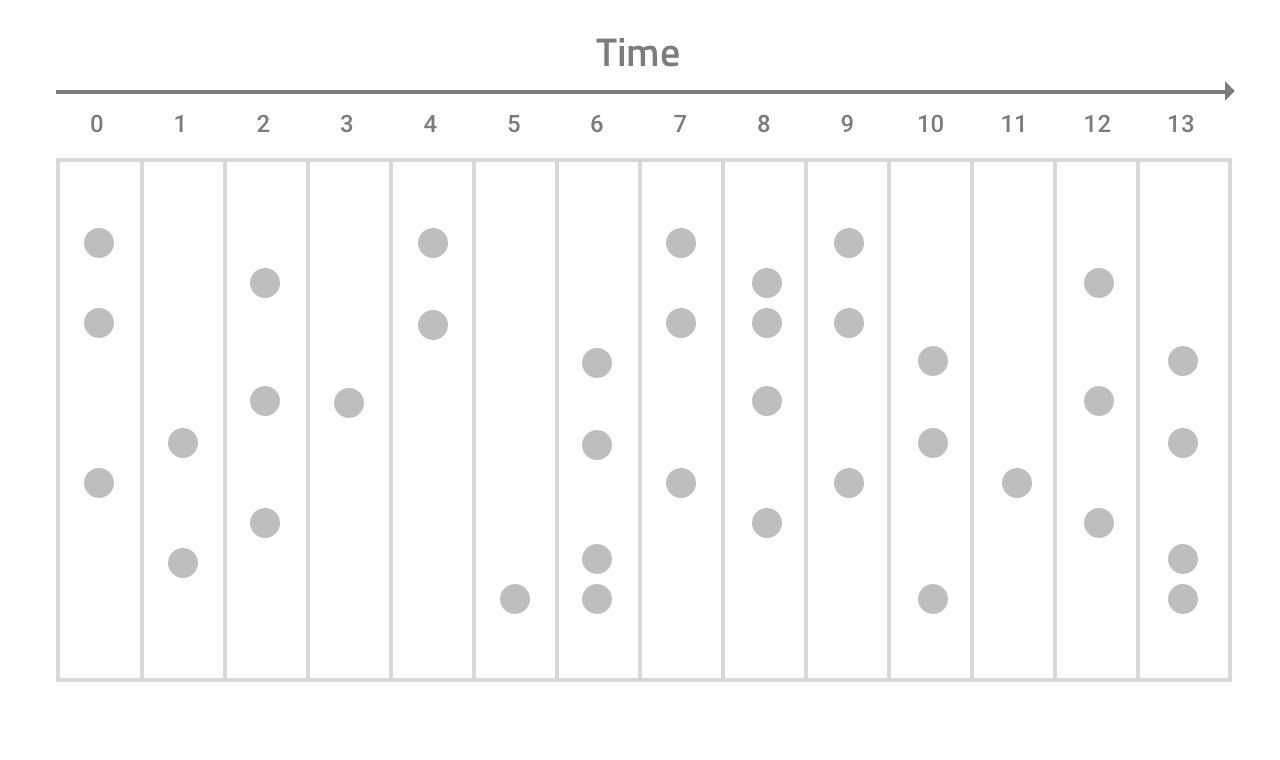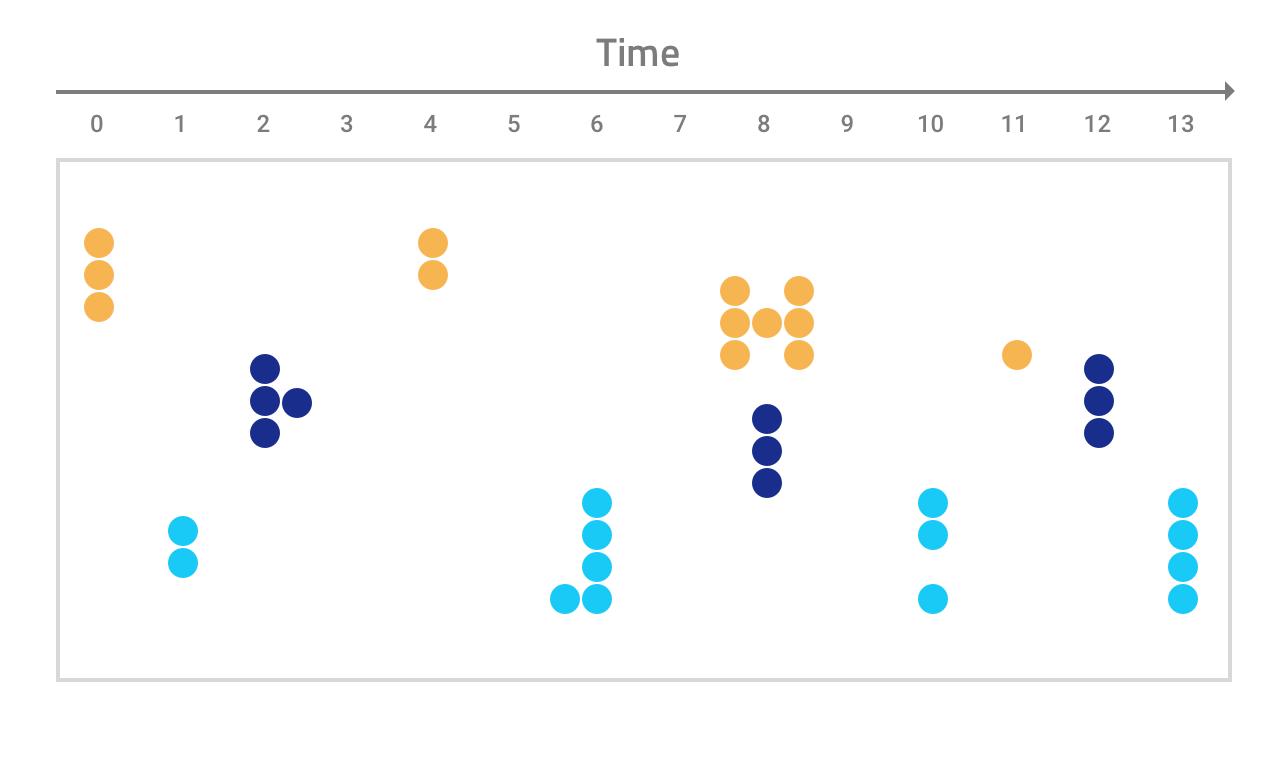Time-based Clustering with Tempus
Tempus is a time-based algorithm in Moogsoft Enterprise which clusters alerts into Situations based on the similarity of their timestamps.
The underlying premise of Tempus is that when things go wrong, they go wrong together. For example, if a core element of your network infrastructure such as a switch fails and disconnects then it affects a lot of other interconnected elements which send events at a similar time.
Tempus uses the Jaccard index to calculate the similarity of different alerts. It also uses community detection methods to identify which alerts with similar arrival patterns it should cluster into Situations.
As Tempus is time-based, you should not use it to detect events relating to the slow or gradual degradation of a service from disks filling up or CPU usage.
One advantage of Tempus is it only uses event timestamps for clustering so no alert enrichment is required.
Time-based clustering
Moogsoft Enterprise applies Tempus incrementally to alerts as it ingests them so that it can create Situations in real-time.
The diagrams below show how Tempus sorts and then groups alerts with similar timestamps into Situations.
Raw alerts from the Moolet chain, for example, the Alert Builder or Alert Workflows, arrive over a period of time. These are shown as gray dots in the diagram below:
 |
Tempus identifies and sorts which alerts have similar arrival patterns:
 |
Tempus clusters alerts with similar arrival patterns into Situations:
 |
Configure Tempus
To configure Tempus via the Moogsoft Enterprise UI, see Configure Tempus.
You can also configure Tempus using the Graze API.